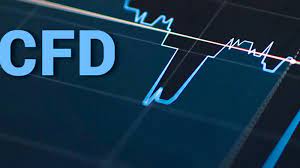
Risk Management in CFD Trading: What You Need to Understand
CFD trading, or Contracts for Difference, has gained immense popularity as a flexible and accessible financial instrument. While it offers opportunities for profit, it also carries significant risks. Managing these risks effectively is what separates successful traders from the rest. Whether you’re a novice or an experienced CFDs trader, understanding risk management is essential for sustaining consistent performance.
Why Risk Management is Crucial in CFD Trading
cfds trading is inherently volatile. The leverage available in CFD trading enables traders to magnify their gains, but it equally amplifies their losses. For instance, with 10x leverage, a 5% market move against your position could lead to a 50% loss on your capital. This makes risk management essential to prevent catastrophic outcomes.
Additionally, markets are influenced by diverse factors, such as geopolitical events, economic indicators, and market sentiment, all of which can lead to unpredictable price movements. Without robust risk control measures, traders expose themselves to losses that could wipe out their accounts.
Key Strategies for Managing Risks
1. Set Risk Limits
One of the foundational rules in risk management is to never risk more than a certain percentage of your trading capital on a single trade—typically 1-2%. This approach ensures that even a series of losses doesn’t deplete your capital.
Example
If you have $10,000 in trading capital, risking 2% per trade means your maximum loss should not exceed $200, regardless of the size of your position or the leverage used.
2. Use Stop-Loss Orders
Stop-loss orders are indispensable tools for managing risks in CFD trading. By setting a stop-loss, you predefine the level at which your trade will be automatically closed, limiting potential losses.
Example
If you buy a CFD at $100 and decide your maximum acceptable loss is $5 per unit, you can set a stop-loss order at $95 to close the trade automatically if the market moves against you.
3. Diversify Your CFD Portfolio
Placing all your capital in one market or asset class is risky. Diversification allows you to spread your risk across uncorrelated assets. For example, if equity markets are underperforming, gains in commodities CFDs could potentially offset some of those losses.
4. Monitor Leverage Usage
High leverage can be tempting, but it also increases your exposure to risk. Using conservative leverage ratios can help you trade with more control and minimize the chances of large losses.
5. Stay Updated and Plan Ahead
Having a detailed trading plan that includes entry and exit strategies helps you trade with discipline rather than emotion. Continuously monitor news and trends that could impact the market, and adjust your positions as necessary.
The Psychological Aspect of Risk Management
Beyond technical strategies, successful risk management also requires emotional discipline. Fear and greed are two emotions that can derail even the most well-planned trades. Sticking to your trading plan, setting realistic goals, and avoiding impulsive decisions are keys to maintaining a balanced and logical approach to trading.
Final Thoughts
Effective risk management in CFD trading doesn’t just limit potential losses; it also builds confidence and ensures the longevity of your trading career. By setting strict limits, diversifying your portfolio, using stop-loss tools, and maintaining emotional discipline, you’ll be better equipped to thrive in the fast-paced world of CFD trading.


